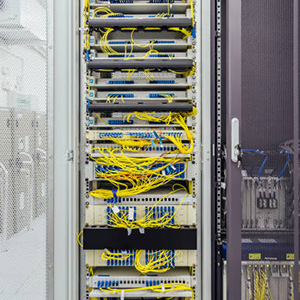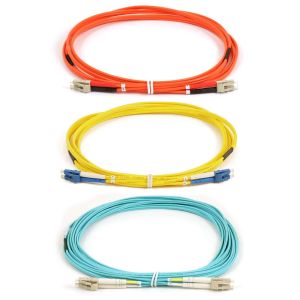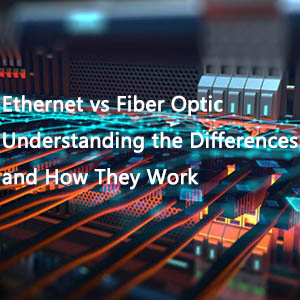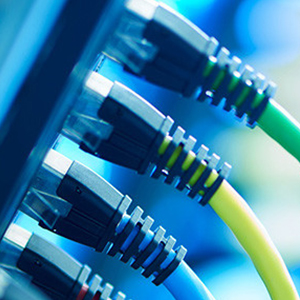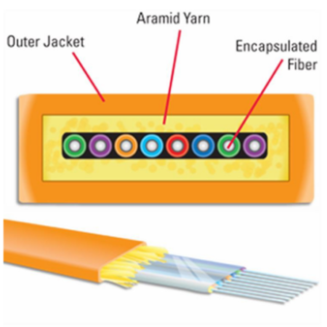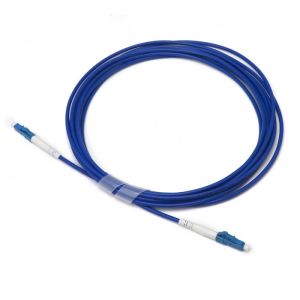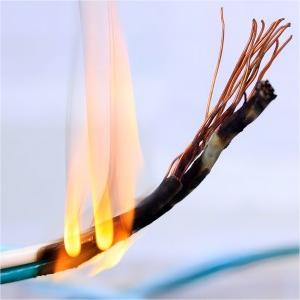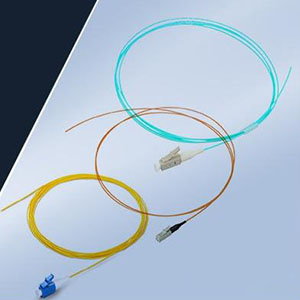The MTP® fiber connector is a crucial component widely used in high-density network applications, including data centers, broadcast communications, and industrial control systems. Since its introduction, MTP® cabling has been embraced by numerous network installers for its suitability in 40G/100G/400G high-speed network systems. This post provides a comprehensive introduction to the MTP® fiber connector, exploring its high-performance and high-density features, and other related information.
What Is MTP® and MPO Connector?
MTP® is the acronym for Multi-fiber Termination Push-on, which is a registered trademark of US Conec. The MTP® connector is a high performance MPO connector with multiple engineered product enhancements to improve optical and mechanical performance when compared to generic MPO connectors. In MTP® vs MPO Cable, there is a concrete comparison in all respects.
Both MTP® and MPO fiber optic connectors comply with the international standard “IEC-61754-5” and the American standard “TIA-604-5 (FOCIS5)”, which shows that the two are compatible to some extent. Although MTP®/MPO fiber optic connectors’ dimensions are similar to ordinary SC connectors‘, the density of MTP®/MPO fiber cable connectors has increased several times compared with ordinary SC connectors, which can save a lot of space and resources for optical fiber wiring. The deconstruction of MTP® cable connector is illustrated below.

Figure 1: Deconstruction of MTP® fiber connector
MTP® Elite connector is a high-performance MTP® connector, which can reduce the amount of insertion loss by up to 50% when compared to standard MTP® connectors and traditional MPO connectors. The specific comparison is shown below.
| MTP® | MTP® Elite | |||
|---|---|---|---|---|
| Single Mode | Multi-mode | Single Mode | Multi-mode | |
| Insertion Loss | 0.20 dB Typical (All Fibers) | 0.25 dB Typical (All Fibers) | 0.10 dB Typical (All Fibers) | 0.10 dB Typical (All Fibers) |
| 0.60 dB Maximum (Single Fiber) | 0.75 dB Maximum (Single Fiber) | 0.35 dB Maximum (Single Fiber) | 0.35 dB Maximum (Single Fiber) | |
| Optical Return Loss | > 20dB | > 60 dB (8° Angle Polish) | > 20dB | > 60 dB (8° Angle Polish) |
What Are Male MTP® Connector and Female Connector?
The MTP® optical fiber connector includes optical fiber, sheath, coupling components, metal ring, pin (PIN needle), dust cap, etc. The pin part is divided into two forms: male and female. The male connector has two pins, while the female connector does not. The connection between MTP® fiber connectors is precisely aligned through pins, and the two MTP® connectors connected to each other must be a male and a female. In an MTP® system, the gender (male/female), the orientation (KeyUp/KeyUp, or KeyUp/KeyDown) and end face alignment (straight or angled) will all impact the MTP® polarity.
Polarity is the match from transmitter(Tx) to the receiver (Rx) of the optical fiber link. Only when the fiber connector is connected with the right polarity will the transmission process get normal. There are three methods for configuring system polarity approved by TIA-568 standard—Type A, Type B and Type C, which can be used for different MTP® trunk cables. To get more information about fiber polarity in detail, you can check out this post: Understanding Polarity in MTP®/MPO System.

Figure 2: Male MTP® Connector And Female Connector
Advantages of MTP® Connectors
Though MPO fiber connectors and MTP® fiber connectors use the same form factor and multiplex push-pull coupling type (SNAP), to improve optical and mechanical performance, MTP® connectors developed by US Conec feature some unique design characteristics. Three features will be introduced in detail below:
Simple and Fast Installation
Compared with traditional fiber systems, the installation time of the MTP® system is shorter, which can be reduced by up to 75%. MTP® cable connector is designed with removable housing, which not only enables re-working and re-polishing the MT ferrule but also achieves quick transition of gender from male to female. No matter if it’s after assembly or not, the MTP® connectors with removable housing offer easy and effective solutions to users.

Figure 3: Removable housing of MTP® connector
Flexibility
The MTP® fiber connector is offered with four standard variations of strain relief boot, which gives more flexibility over the cable used in a wide array of applications. Additionally, flexible strain relief boots enable cables stretch in varying positions, from 0 to 90°, which greatly improve cable management in tight-space configurations.
Stability
- Within the MTP® cable connector, there is a metal pin clamp helping eliminate lost pins and center spring force. The spring design maximizes ribbon clearance for multi-fiber ribbon applications to prevent fiber damage.
- MTP® cable connectors use ferrules molded from thermoplastic, which are more resilient to varying temperatures. Such ferrule material maintains a constant diameter for the guide holes, which creates more reliable physical connections.
- The MTP® connector adopts a slidable locking structure, which allows the two connectors to maintain good physical contact with the ferrule under the influence of external force during connection.
- After countless accumulation of experience, the alignment guide-pin was later optimized into a more accurate elliptical guide-pin, which greatly reduced the wear and dust on the guide hole caused by multiple insertions and removal, thereby improving stability and durability.
FAQs on MTP® Connectors
This section provides answers to frequently asked questions relating to MTP® fiber connector components and maintenance.
What is the MT ferrule?
MT is the abbreviation for mechanically transferable. MT ferrule is a multi-fiber, plastic ferrule with a square end-face of 6.4×2.5mm and fiber pitch 0.25mm widely used in MPO/MTP® connectors. Different from ferrule used in other fiber connectors, MT ferrule within an MPO/MTP® connector is made from a monolithic, high precision glass-filled polymer rather than a ceramic material. It is able to connect multiple fibers with high-precision and high-density technology to achieve low loss in each fiber.

Figure 4: MT ferrule within an MTP® connector
How to clean MTP® connectors?
It is a must to do fiber cleaning in the fiber connector manufacturing process or during the usage of fiber connectors, so do MTP® connectors. The cleaning process for MTP® connectors always goes through three stages: inspect, clean and reinspect. Correctly use the microscope to inspect and make sure there is no dust in either of two mating connectors because once one of them is polluted, the dirt can migrate to another one. Clean the end face of the MTP® connectors with the use of the MTP® cleaning tools designed for MTP® connectors until the contaminants are removed.
Conclusion
Through the above introduction, I believe everyone now has a clearer understanding of MTP® connectors. The MTP® fiber connector and MTP® cabling system from Fiber-Life provide a simple and reliable optical fiber cabling solution. As effective and future-proof solutions, Fiber-Life‘s MTP® fiber connectors will thrive in many network applications in the near future.

